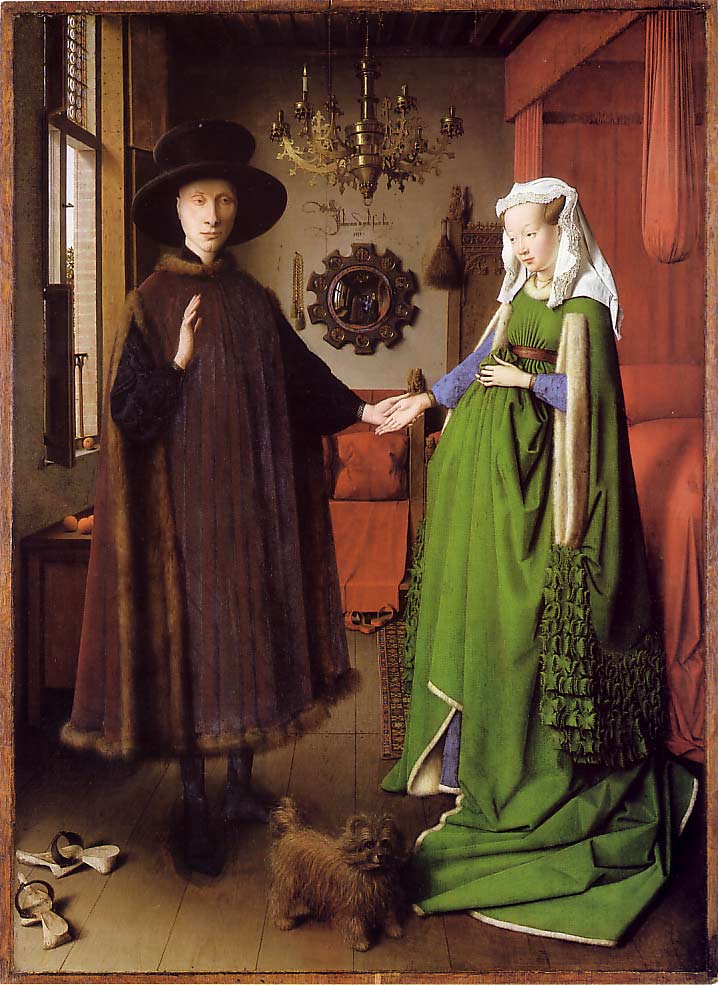(c.1390-1441)
Early Renaissance
c.1390 - Jan Van Eyck is born in Maaseyck near Maastricht
1422 - becomes the court painter at Court Johann III of Holland (The Hague)
1425 - gets employed by Duke Philip the Good of Burgundy
1425 - travels to Italy on a secret diplomatic journey
1426 - Van Eyck's brother dies in Ghent
1428/29 - he travels to Lisbon to paint a portrait of Princess Isabella
1430 - purchases a house in Bruges
1436 - goes on a journey to the Holy Land
1441 - Jan Van Eyck dies on June 23rd in Bruges
Jan Van Eyck was a Dutch master painter. As court painter to Duke Philip the Good, he was appointed to travel to Lisbon to paint a picture of Isabella of Portugal (whom the duke was going to marry). He painted two portraits of the woman depicting all her natural features and therefore making the image very lifelike which was very characteristic of his work. No matter whom he was painting Van Eyck always presented everyone with their assets and flaws - honorable and dignified but having bad skin, point chin, or big nose. He never beautified his subjects. Still, he was commissioned by rich and famous rulers to paint their portraits.
Amazing oil painting technique
The only time when Jan Van Eyck ever focused on the beauty and purity of his subject was in his portrayal of Madonna with her child. His exquisite religious paintings decorate Gothic churches until today. Most artists before Van Eyck had used egg tempera, which although longer lasting, wasn't able to depict the vividness and glow of the glamorous fabrics and expensive garments. Van Eyck, however, mastered the new technique of oil painting. We can confidently say that he was the first Dutch master in realistic oil painting. It allowed him to not only create amazingly realistic portraits of people but also show the fine textures of fabrics and the transparency of various objects. He painted the Ghent Altar with his brother Hubert, who actually started the altar. It was finished by Jan after His brother's death.

Portrait of Arnolfini and his Wife Giovanna Cenami, 1434. Oil on wood, 81.8 x 59.7 cm (32.2 x 23.5 in) National Gallery, London.

Ghent Altar (closed), completed 1432. Tempera & oil on wood. 335 x 229 cm (11 x 7.5 ft) St, Bavo, Ghent.

Ghent Altar (open), completed 1432. Tempera & oil on wood. 335 x 229 cm (11 x 7.5 ft) St, Bavo, Ghent.



No comments:
Post a Comment